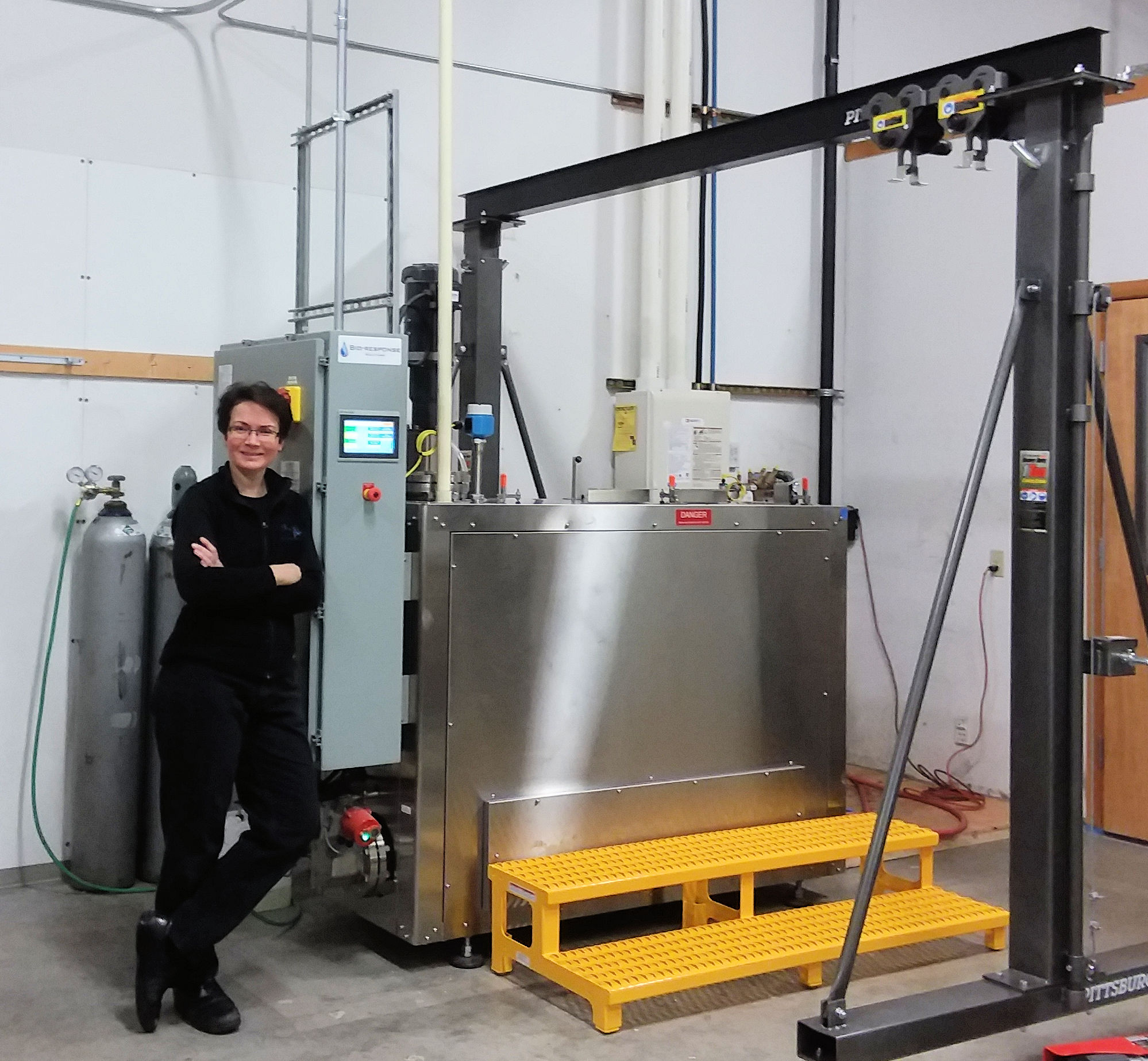The following text was provided by Bio-Response Solutions, Inc. — the maker of Radiant Heart’s PET550 pet aquamation machine.
This is a “technical” description of the process. For a more general understanding of the differences between flame cremation and water cremation, please see Eco-Friendly Water Cremation.
The Hydrolysis Process
The alkaline hydrolysis process converts animal remains and microbial tissues into a sterile, EPA neutral, aqueous solution suitable for disposal to a sanitary sewer. The process will reduce the body volume and weight by more than 95% and will destroy pathogens. The alkaline hydrolysis process can be completed at a lower price than incinerating the same body and it releases no dangerous emissions. This is a very environmentally friendly process. It can be best described as an acceleration of the natural decomposition of a body.
How it Works
This system [PET400] uses alkaline hydrolysis at elevated temperature to break down nucleic acids, proteins, and lipids of all cells and tissues and convert them to a solution of small peptides, amino acids, sugars, and soaps. The alkali can be dry or liquid Potassium Hydroxide (KOH), Sodium Hydroxide (NaOH), or a combination of the two. Ribonucleic acid (RNA) and deoxyribonucleic acid (DNA) are rapidly destroyed in the process. [Radiant Heart utilizes a combination of KOH and NaOH.]
Soaps are formed when common fat, phospholipids of cell secretions, and cell membranes consume the alkali.
The leftover remains are the mineral constituents of the bones and teeth of the body. These are very brittle and soft enough after the organic matter has been consumed to be easily crushed into a powder of “ash” (calcium phosphate).

Bobbie Ruth Langley, President/Owner of Radiant Heart with the PET400
The Machine
The system consists of an insulated, stainless steel processing chamber with removable baskets to hold the remains. The basket has dividers to allow for many configurations, and will retain the bone remnants after the process has completed. The system is heated via an electric immersion heater made of a special material to handle the abuse of the alkali under extreme temperatures. Rinsing and flushing is accomplished through bottom filling with two water control valves. The system will do a series of rinse and fill cycles to cleanse the bones after the alkaline hydrolysis process is complete. The system is controlled by a Programmable Logic Controller (PLC) and is fully automated once the user loads the machine and presses the HIGH or LOW “START PROCESS” button.
Operation Overview
To begin the process, the user will remove the basket lid and load the animals. [Radiant Heart carefully plans each cremation, using the previously mentioned dividers to create smaller baskets/sections within the primary baskets. These smaller sections are where a pet’s body is carefully placed.] Once the bottom basket is filled, you can either run a LOW cycle, or continue loading the top basket for a FULL cycle. Alkali is added to the vessel in a ratio appropriate for the total animal weight. The user must then close and latch the vessel lid. Make sure the desired Process Parameters are selected for time and temperature. Once those are set, the user chooses a high water level or low water level START PROCESS button.
Once the process has started, the machine will automatically fill with the proper amount of water based on the type of cycle that was chosen. Once full, the mixer motor will turn on and begin to gently agitate the liquid. The mixer is a critical element to a successful and complete end result. At the same time, the electric heater will turn on and begin to heat the water and remains to the set-point process temperature. Once to full temperature (208 degrees F or 98 degrees C), the system will advance to the process portion of the cycle. [The process portion takes 18-20 hours.]
Once the process portion is complete, the system begins to drain with a cold water co-flush that brings the hot liquid effluent to a safe temperature for discharge into the sanitary sewer. [Radiant Heart pauses the process before draining to test the PH level of the water before it is discharged.] The system will then enter a series of hot and cold rinse cycles to wash the bone remains so that they are clean and free of the liquid effluent after draining.
After the cycle is complete, the user can open the lid and the solids baskets are unloaded. The basket is emptied of any bone remnants. [Radiant Heart uses a special set of tools to carefully and completely remove each pet’s remains individually.] The system is now ready for another cycle.
